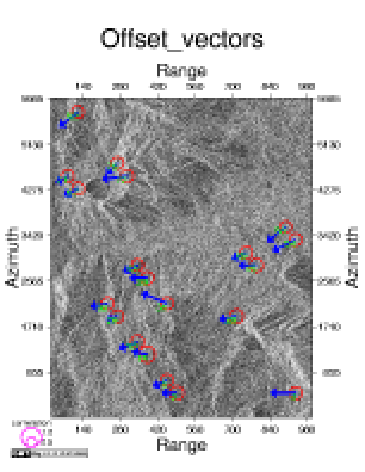



Next: Input Cards
Up: usermanual
Previous: S_FILTAZI
Contents
FINE
In this chapter the processing of step FINE is described. The offset
vectors to align the slave image to the master are computed with sub
pixel accuracy for a number of locations in the master.
Over the total image, for a large number of windows (e.g., 500,
distributed by Doris or from a file with locations in the master
coordinate system), the offset between master and slave is estimated
by computing the correlation of the magnitude images for shifts at
pixel level. Next, in a local neighborhood of the maximum
(correlation at pixel level) these correlations are harmonically
oversampled (interpolated, requires FFT) to find the maximum at sub
pixel level. These offsets are then written to the (products)
result file.
The offset is computed in the spectral or in the space domain (which
is implemented to avoid the use of FFT, but that is required later
anyway, and to provide a check of the method in the spectral domain,
which should be faster). The correlation is computed on the magnitude
images.
Though we believe this to be a good method, we would like to
investigate first oversampling the images itself, and directly
computing the correlation for a small number of shifts (assuming
initial offsets are known within a few pixels), as we suspect that
there may be an error introduced due to aliasing with the method that
is implemented. (This method will be named 'oversample'.)
The actual computation of the transformation model (2d polynomial) is
done by the step COREGPM (computation of coregistration
parameters).
See also [13].
Figure 17.1:
Plot produced by the command 'plotoffsets interferogram.out 11 6000
21 1000 0.6 Outdata/1393.raw' (keycard FC_PLOT 0.6 BG). The
magnitude is plotted in the background. Correlation is indicated by
the size of the circles, estimates with a correlation below 0.6 are
filtered out.
 |
Subsections




Next: Input Cards
Up: usermanual
Previous: S_FILTAZI
Contents
Leijen
2009-04-14

